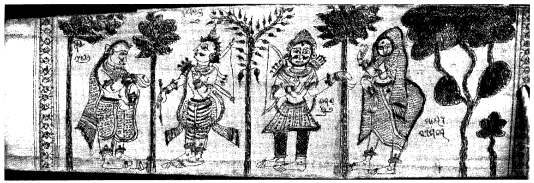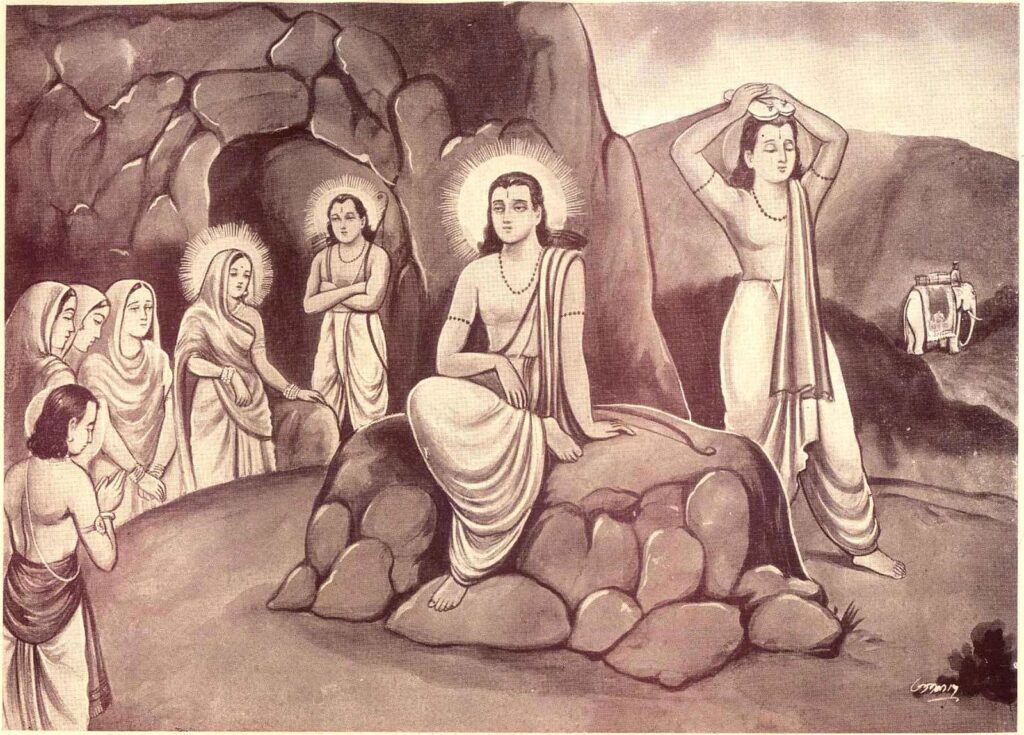This week I researched some of the story parallels between the episodes within the Ramayana and those within Greek epics. If I go with this Storybook topic, I can put the characters in similar situations. Overall, while I’ve found a lot of surprisingly similar stories between the two cultures, and both sets of stories have the traditional tropes of heroic epics, the characters are very different in nature. I think there could be a lot of rivalry or conflict between them if they ever “met,” and that could be fun to explore.
Story #1: Helen and Sita
I started off exploring the abductions of Helen and Sita. I hadn’t even thought of this parallel until Laura pointed it out the peculiar variation on the kidnapping that both stories share: in some traditions, Sita was replaced with an illusory version of herself, just like some Greek poets argued that Helen never actually went to Troy. (Here’s a Wikipedia source for Helen and one for Maya Sita.)

I am fascinated by this wrinkle and surprised it appears in both traditions. The reasoning behind the choice makes sense. The abduction of these women calls their marital fidelity into question, and that is a problem when the heroes, like Menelaus and Rama, are supposed to demand the utmost righteous and purity from themselves and their companions. At the same time, by my more modern opinions about purity, consent, and fidelity, I find it disturbing that storytellers came up with convoluted workarounds to prove the heroines’ purity. Especially in the case of Rama and Sita, Rama is extremely distrustful of Sita’s claim that she didn’t sleep with Ravana and forces her to prove it through a divine trial. I would prefer he just believed her, and even if Ravana had touched her, it was no doubt without consent, and Sita was the victim here.

Anyway, I think the very fact that this has stirred up a lot of thought for me makes it a fascinating story to explore. While I pointed out the more creepy aspects of the phantom episodes, they’re also cool because they add mystery and deception to the stories. I also think they give the heroines more opportunity for agency in the stories. Instead of sitting in a tower waiting to be rescued, Helen and Sita could influence the heroes from behind the scenes. I think it would be interesting if Sita and Helen found themselves kidnapped together and worked together to make phantom versions of themselves so they could escape.
Story #2: The Stringing of the Bows
Both the Ramayana and the Odyssey have episodes where the hero strings a legendary bow and performs a great feat of archery to win their wife. In the Ramayana, Rama strings Janaka’s bow, which no one but Sita could even lift, and in the Odyssey, Odysseus returns to Ithaca in disguise to prove his identity and drive out the suitors who are after his wife Penelope.

I wanted to read an account of Janaka’s bow with more detail than the Tiny Tales version that I read for the weekly reading assignment, so I dug around until I found this version of the epic by Krishna Dharma, and here is the chapter about Rama’s archery trial. I also visited the Mythology and Folklore Un-Textbook to find this online translation of Odysseus’s archery story. I think in the storybook, it might be interesting if these two had a friendly (or maybe not) archery competition.
Story #3: Heroic Dedication to Duty
My favorite moment in the Iliad, and maybe really all of literature, is when Hector and Andromache say goodbye before Hector leaves Troy knowing that he’s going to die. He chooses his duty to his father and the love of his city over betraying his heroic ideals to be with his wife and son (it’s truly tragic). I saw a lot of this moment reflected in the episode where Rama’s brother Bharata begs Rama to return from exile and be king of Ayodhya. Rama refuses the offer because he doesn’t want to disobey his father’s wishes and is committed to the sacred life of living in the forest. I think Rama and Hector have a lot in common, at least from the portion of the Ramayana I have read thus far.

I once again turned to the Dharma version of the Ramayana to get more detail about Rama and Bharata’s conversation. That story is right here. And here is Hector’s goodbye with Andromache from Alfred J. Church’s translation of the Iliad. I think this story would have a place in my storybook as a more emotional and thematic part because it focuses on the tragic and difficult aspects of being an epic hero. Both Hector and Rama have to give up very good and important things in order to fulfill their destinies.
